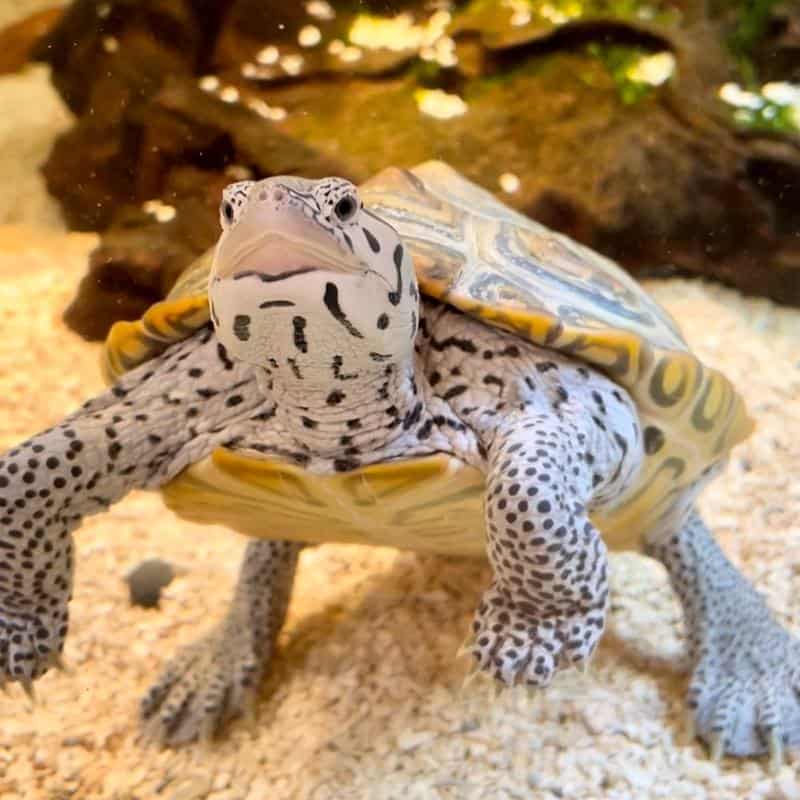The Diamondback Terrapin gets its name from the diamond-shaped growth rings on the back of its shell. The word “terrapin” comes from an Algonquin word for edible turtles that live in brackish water. You can count the age of a terrapin by counting the rings on its scutes. Each scute is unique just like fingerprints are to each human.

In the early 1900s, Diamondbacks were a popular gourmet food. Their numbers declined due to unregulated harvesting and habitat loss through coastal development, which then put them on the endangered species list. Thankfully, they are on the rebound due to conservation projects. The Terrapins now have a safe territory here at the Aquarium!
Habitat
They live in brackish marshes, beaches and mud flats and are typically found along the Atlantic Coast of the eastern United States from Cape Cod to the Florida Keys and west along the Gulf Coast to Texas.
Diet
Diamondback Terrapin are omnivorous (eating both meat and plants) they consume fish, snails, worms, clams, crabs, and marsh plants.
Behavior
The terrapin will go into hibernation in riverbanks or at the bottom of creeks and rivers in the winter.
Females are significantly larger than males. After mating the female will come up onto the beach and dig a nest to lay a clutch of about 10 to 15 eggs. The eggs will hatch in 60-100 days and like most turtles the temperature decides the gender of the hatchlings. If it is warmer it will produce more females and if cooler it will produce males. If hatchlings do not emerge because of cold weather they will overwinter in the sand and hatch the following spring.
Predators
Diamondback terrapin are threatened due to habitat destruction, road construction (commonly found as road kill) and drowning in crab traps.